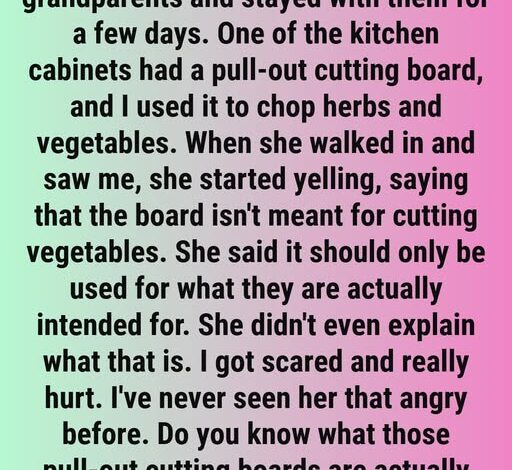Did You Know? The Original Use of Your Kitchen’s Pull-Out Cutting Board

Many people see a cutting board as a basic kitchen staple — something to use for slicing vegetables or preparing ingredients without much thought. However, inside many older kitchen cabinets is a built-in pull-out board with a surprising history. These wooden surfaces were not originally intended for cutting at all. Instead, they were created as dedicated workspaces for one of the oldest and most cherished culinary traditions: baking bread. Before modern appliances and spacious countertops, home bakers depended on these strong wooden boards to knead dough, shape loaves, and prepare meals that played a central role in daily family life.
In earlier kitchens, the pull-out board served as a practical and reliable tool. Its smooth surface offered the perfect texture for handling dough, and when baking was done, the board could be pushed neatly back into the cabinet, keeping the space organized. As kitchens modernized and cooking habits shifted, these boards gradually took on new purposes, evolving from specialized baking stations into general food-prep surfaces. Today’s cutting boards come in a wide range of materials, yet maple wood remains a favorite for its durability, long lifespan, and gentle impact on knife blades.
Maple’s lasting popularity comes from its natural strength and clean, simple functionality. The wood is dense enough to resist deep grooves, which helps reduce bacterial buildup and keeps the surface safe for food preparation. With routine maintenance, a wooden board can stay in excellent condition for years. A light scrub with salt and lemon, a rinse in warm water, and the occasional coat of mineral oil are often all it needs to remain smooth, sturdy, and attractive. As more people rediscover traditional homemaking skills, including breadmaking, wooden boards offer a dependable link between old-fashioned craftsmanship and modern cooking.
In many households, that connection leads back to the comforting ritual of baking bread. The growing interest in homemade baking reminds people of the simple joy of mixing ingredients, shaping dough by hand, and enjoying the warm aroma of a fresh loaf right from the oven. Whether a board is used for chopping vegetables or preparing dough, it remains one of the most essential and versatile tools in the kitchen. The next time you pull out your board, you might notice the history and tradition it represents — a humble surface that has supported cooking, creativity, and family traditions for generations.